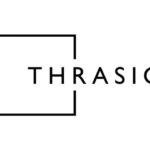Unveiling the Power of Product as a Service
In today’s rapidly evolving business landscape, innovative approaches are reshaping traditional models and paving the way for new opportunities.
One such game-changer is the “Product as a Service” (PaaS) business model.
By providing products as a service rather than a one-time purchase, companies can unlock a host of benefits while meeting the changing needs of consumers.
In this blog post, we’ll delve into the fascinating realm of PaaS and explore its advantages, implementation strategies, and success stories.
The Rise of Product as a Service
The PaaS model challenges the traditional concept of ownership by offering products on a subscription or usage-based basis.
Instead of purchasing a product outright, customers pay for its usage or the value it provides.
This paradigm shift not only enables businesses to generate recurring revenue streams but also allows consumers to access products without the burden of ownership.
From smart home devices to high-end automobiles, PaaS has made it possible to experience the latest innovations without hefty upfront investments.
Advantages of Product as a Service
Financial Flexibility and Lower Entry Barriers
Imagine having access to top-of-the-line equipment or cutting-edge technologies without the prohibitive costs associated with ownership.
PaaS eliminates the need for large upfront investments, making it an attractive option for both businesses and individuals.
By spreading the costs over time, companies can preserve capital and allocate resources more effectively, while consumers can enjoy the benefits of premium products without breaking the bank.
Enhanced Customer Experience and Satisfaction
PaaS creates a win-win situation for businesses and customers.
Companies can constantly improve their offerings based on real-time usage data and customer feedback, ensuring a seamless experience and higher satisfaction levels.
Customers, on the other hand, can enjoy regular updates, maintenance, and support, resulting in improved product performance and greater peace of mind.
It’s a mutually beneficial relationship that fosters loyalty and drives long-term success.
Sustainability and Circular Economy
In an era of heightened environmental consciousness, the PaaS model promotes sustainability and circular economy principles.
By sharing products and optimizing their utilization, businesses can minimize waste and reduce their carbon footprint.
PaaS encourages a shift from ownership-centric mindsets to more resource-efficient practices, contributing to a greener future.
Implementing Product as a Service
1. Identify Viable Product Categories
Not all products are suitable for the PaaS model.
Begin by assessing which offerings align with the subscription or usage-based approach.
Consider factors such as product lifecycle, customer demand, and the feasibility of delivering value on an ongoing basis.
Start with a pilot project and gradually expand into other product categories based on market response and profitability.
2. Pricing and Packaging Strategies
Crafting compelling subscription plans is a critical aspect of implementing PaaS successfully.
Conduct market research to determine customer preferences and willingness to pay.
Experiment with different pricing tiers, bundling options, and add-on services to maximize value for both the customer and the business.
Strive for a balance between affordability and profitability to ensure long-term viability.
3. Robust Technology Infrastructure
To effectively deliver products as a service, a reliable technology infrastructure is essential.
Leverage cloud computing, IoT (Internet of Things), and data analytics to monitor usage, provide timely updates, and proactively address customer needs.
Seamless integration between the physical product and the digital ecosystem is the key to unlocking the full potential of the PaaS model.
Success Stories of Product as a Service
Peloton
Fitness Redefined Peloton disrupted the fitness industry by offering exercise equipment as a service. Subscribers gain access to Peloton’s state-of-the-art stationary bikes and treadmills along with a vast library of on-demand classes and personalized coaching. By combining hardware, software, and content into a holistic experience, Peloton has transformed how people exercise, making fitness convenient, engaging, and accessible to a wider audience.
Zipcar
Unlocking Mobility Zipcar revolutionized the way people think about car ownership. With their car-sharing platform, individuals can rent vehicles by the hour or day, eliminating the need for owning a car in urban areas. By leveraging technology and a network of conveniently located vehicles, Zipcar has empowered people to embrace a more sustainable and cost-effective approach to transportation.
Adobe Creative Cloud
Empowering Creatives Adobe shifted from selling boxed software to offering its suite of creative tools as a subscription service through Adobe Creative Cloud. This transition not only provided customers with regular updates and cloud-based storage but also fostered a collaborative ecosystem for creatives to connect and share their work. The move to a PaaS model has cemented Adobe’s position as a leader in the creative software industry.
Rent the Runway
Fashion On-Demand Rent the Runway offers a subscription-based service that allows customers to rent designer clothing and accessories for a specified period. By providing access to high-end fashion without the need for ownership, Rent the Runway caters to individuals who want variety in their wardrobe without the hefty price tag. Customers can select items, have them delivered, wear them, and return them, creating a seamless and sustainable fashion experience.
Spotify
Music Streaming Service Spotify disrupted the music industry by introducing a streaming service that offers access to millions of songs on-demand. With a subscription-based model, users can enjoy their favorite music without purchasing individual albums or songs. Spotify’s platform also offers personalized playlists, algorithm-based recommendations, and the ability to discover new artists and genres, enhancing the overall music listening experience.
Netflix
Video Streaming Platform Netflix transformed the way we consume movies and TV shows by providing a subscription-based video streaming service. Instead of buying or renting DVDs or Blu-rays, subscribers gain access to a vast library of content that can be streamed on-demand across multiple devices. Netflix’s success lies in its ability to offer a convenient and affordable alternative to traditional cable or satellite television, providing a wide range of entertainment options.
HelloFresh
Meal Kit Delivery HelloFresh revolutionized meal preparation by offering a subscription-based meal kit delivery service. Customers receive pre-portioned ingredients and detailed recipes, allowing them to cook delicious and healthy meals at home. By eliminating the need for grocery shopping and meal planning, HelloFresh simplifies the cooking process and provides convenience for individuals who want to enjoy homemade meals without the hassle.
Airbnb
Homesharing Platform Airbnb disrupted the hospitality industry by offering a platform where individuals can rent out their homes or spare rooms to travelers. By connecting hosts with guests, Airbnb provides a unique and personalized accommodation experience, often at a lower cost compared to traditional hotels. Through the PaaS model, Airbnb has empowered homeowners to monetize their properties and travelers to access more diverse and affordable lodging options.
These examples illustrate the versatility and impact of the Product as a Service model across various industries.
By focusing on delivering value through access and convenience, these companies have successfully transformed customer experiences and disrupted established markets.
The Future of Product as a Service
Industry Disruption and Adaptation
As the PaaS model gains momentum, we can expect to witness industry-wide disruptions and adaptations.
Traditional businesses will need to rethink their value propositions and explore how they can integrate services into their offerings to stay competitive.
Companies that embrace PaaS as part of their strategic vision will have a greater chance of thriving in the evolving business landscape.
Evolving Customer Expectations
With PaaS becoming more prevalent, customer expectations will continue to evolve.
Consumers will increasingly seek personalized experiences, flexible subscription options, and value-added services.
Businesses must continuously innovate and anticipate customer needs to remain relevant and maintain a competitive edge.
Collaboration and Partnerships
The PaaS model encourages collaboration and partnerships among companies that offer complementary products or services.
By joining forces, businesses can create bundled solutions that provide enhanced value to customers.
Collaborative ecosystems will emerge, where different organizations come together to offer comprehensive offerings, further enriching the PaaS landscape.
Related Posts
Conclusion
The rise of the Product as a Service business model is transforming the way we consume and interact with products.
By shifting from ownership to access, businesses can unlock financial flexibility, deliver exceptional customer experiences, and contribute to a more sustainable future. Implementing PaaS requires strategic planning, robust technology infrastructure, and a deep understanding of customer preferences.
As we look ahead, the PaaS model will continue to disrupt industries, shape customer expectations, and foster collaboration. Embracing this innovative approach opens up a world of possibilities for businesses willing to adapt, evolve, and thrive in an ever-changing marketplace.
So, are you ready to embark on a journey where products become services, and the possibilities are limitless? Strap in and get ready to experience the power of Product as a Service!











